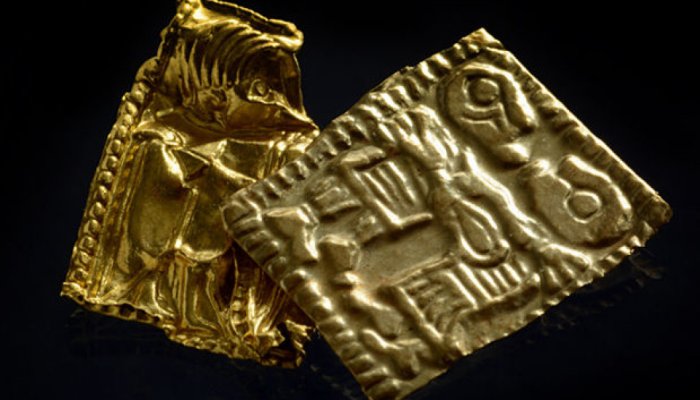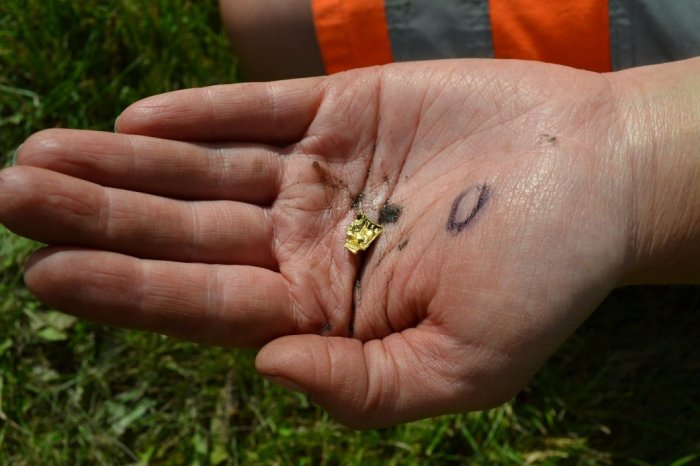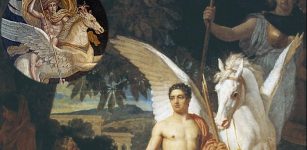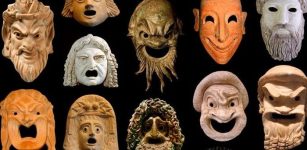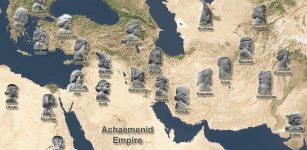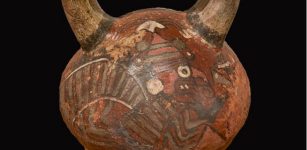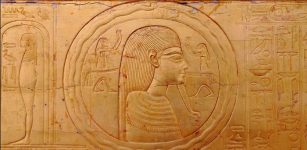Mysterious Tiny Pre-Viking Gold Foil Figures Baffle Scientists
Conny Waters - AncientPages.com - These tiny gold foil figures are mainly associated with the Pre-Viking Age, but what were they used for?
A metal detector discovered an ancient gold piece of gold depicting a man and woman at Hovland farm in Tjølling, Larvik, Norway. It’s a sensational find that baffles archaeologists. The gold piece is roughly the size of a fingernail.
There is no doubt this ancient artifact was of special importance but scientists cannot figure out whether the objects’ clear practical function.
Were they used as messages of courtship, identity belongings or ceremonial objects?
The gold foil figure found in Larvik in Vestfold recently. (Photo: Vestfold fylkeskommune)
In 2016 two gold foil figures found in Åker in Hamar. About 1500 years ago it was an important place for chiefs and powerful people met there. Researchers wonder whether the small gold foil figures were somehow used at such meetings.
Many wrongly assume these tiny figures were used by the Vikings, but this is not the case.
Gold foil figures were mostly in use before the Vikings, during the Merovingian age, or “the age of petty kingdoms” as it is sometimes called.
“This is classic media – everything that is not called medieval is called the Viking Age”, archaeologist Ingar Mørkestøl Gundersen told Science In Norway.
“People are familiar with the Vikings. But the gold foil figures are mainly associated with the period before the Vikings, the Merovingian age. But then again, the Viking Age is just a continuation of the Merovingian Age, so perhaps it’s not such a big deal. The foundation for the Viking Age, ideologically, religiously and militarily, stems from the Merovingian age.”
The gold foil figures from Åker in Hamar. The one with a lighter colour contains more silver than the other. (Photo: Vegard Vike og Jessica McGraw, KHM/UiO)
Norway became a country with one king around 865, under Harald Hårfagre. During the age of petty kingdoms however, there would have been an abundance of powerful people, ruling their little part of what was to become Norway.
One theory is that these rulers used gold foil figures to signal that they were special, or to claim that they were related to the Gods in Norse mythology.
Several of the previously discovered small pieces of gold were decorated with figures, both males and females.
Some speculate these depictions represent figures from Norse Mythology.
However, as Science In Norway explains, “some speculate that what we see is a wedding, and that these little gold pieces in the age of petty kingdoms signalled something about geneaology. That the image somehow signalled that a person was related to the Gods, and thus had a God given right to rule.
Gold foil figures have been found in many places in Norway, usually in locations that were considered important before the onset of the Viking Age.
They have been found in places where people would have met to make sacrifices to the gods, and in places where people of power met.
“When you find a gold foil figure you can be pretty sure that you are onto the people who ruled what was to become Norway around 1500 years ago”, says archaeologist Gundersen.
To date, gold foil figures have only been found in Norway, Sweden and Denmark. In Norway, there have been less than a hundred findings. In Denmark however there have been plenty more. In one famous site on the island of Bornholm, archaeologists found more than 2500 pieces.
The gold foil figures found in Denmark have a higher variety of motives on them, which includes pigs, deer and bears.”
Gundersen also emphasizes the importance the meaning of the Fimbulwinter that was long considered a myth but was a real event.
“I believe the Fimbul winter was a watershed, but perhaps not as apocalyptic as some suggest”, he says.
The hand of an archaeologist holding one of the two gold foil figures found in Åker in Hamar in 2016. They were found in the soil, slightly apart from each other. (Photo: Tone Bergland, Kulturhistorisk museum)
Changes in power structures had begun before the long winter. New dynasties that in various ways profited from the crisis emerged. These were often a mix of old and new rulers. Enormous burial mounds were built during this period. These overshadow all such burial mounds built before or after.
“There was probably a lot of war and fighting”, says Gundersen.
“Warrior aristocracies stood against older ruling classes whose power had been based on ownership of land.”
People wanted more power, and they wanted to take power from the old rulers. Being able to argue that you were related to the Gods might have been a good card to play in this struggle.
“And maybe this is where the gold foil figures came into play?”, Gundersen speculates.
Written by Conny Waters - AncientPages.com Staff Writer


